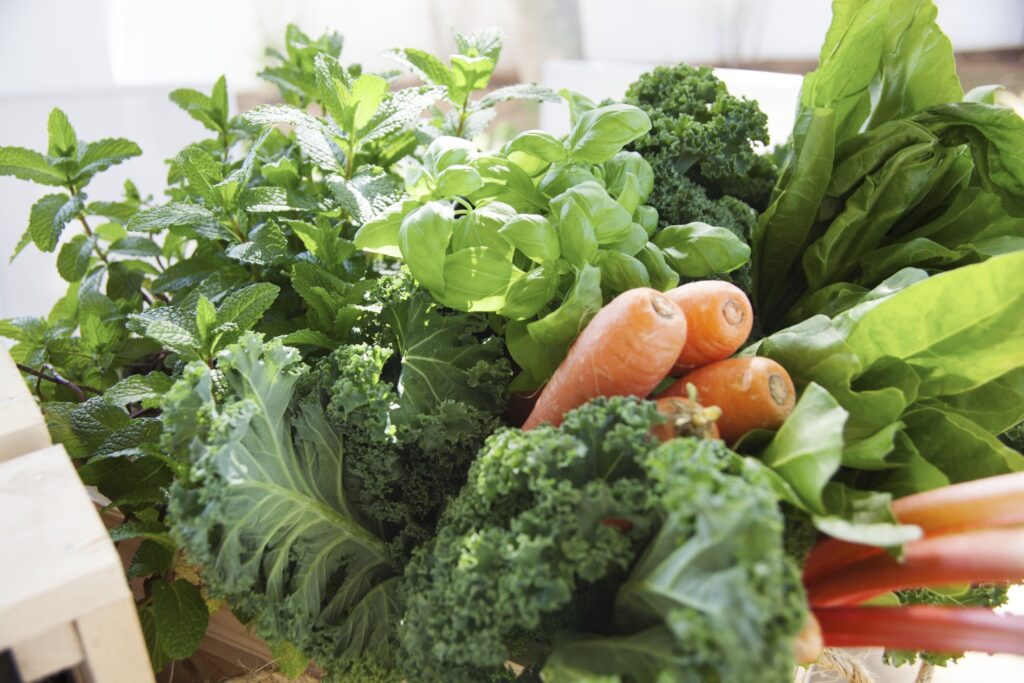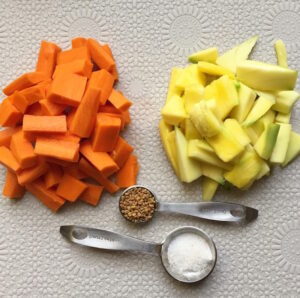Sauerkraut, Kimchi, Kavass, Kefir, Sourdough and Kombucha are just a few of the names given to fermented food and
drink. Beers, wine, yogurt and cheese are other name associations that come to mind when the word fermentation is used.
Fermenting food isn’t a new concept. It goes back to the first humans on this planet that needed to create a method to
preserve their food, long before refrigeration.
Bacteria is all around us and these microbial cultures are usually depicted as scary little green monsters we need to wash away with antibacterial soap to stay safe. We have become scared of food that isn’t pasteurised at high heat to kill these bacteria and to keep us safe from potential harm. With pasteurisation (often law enforced) we also kill the good bacteria with the bad. This means many of us now lack these friendly microbial cultures in our digestive tract, which play a critical role in our gut health.
Probiotics are microbial organisms that take up residence in our gut. We need them to digest our food, absorb nutrients and help eliminate toxins. We need our gut to function optimally because it is so crucial to a strong, healthy, and fully functioning immune system. We also host bad bacteria in our gut which in itself is not a problem as we can accommodate these unwanted guests. The problem manifests when we consume food that isn’t very good for us which causes the bad bacteria to multiply and overstay their welcome. The problem becomes apparent when we neglect our good friendly bacteria by not creating an environment for them to survive and by generally not looking after our gut flora with prebiotics. Prebiotics are indigestible carbohydrates which are food for probiotics. If good health is our goal, we want the good vs bad bacteria to be balanced.
We are only just starting to scratch the surface of how important gut health and probiotics are. In fact, it was a sentence I heard in a nutrition lecture I attended once that got me into fermenting food. The sentence was this “antibiotics means anti life, whereas probiotics means pro life’’. Although antibiotics are critical and necessary in medicine, this interpretation of the word made me transition towards investigating pro-life i.e. probiotics. Studies and research is being conducted globally that investigate the effects and possible benefits of fermented foods on physical, mental, and even emotional health. Some of the possible positive effects have been shown with those suffering from autism, cancer, arthritis and even weight loss. Other studies have demonstrated the many strains of good bacteria in fermented foods, some highlight findings such as there is an increase of vitamin C in cabbage (in sauerkraut) after fermentation . These are all fascinating and an area that, although it once had limited research, it is now being closely looked at.
You will see probiotic foods and supplements with the names of different strains such as lactobacillus, bifodobacterium and streptococcus. Some tell you their CFU’s (colony forming units, or live organisms) closest to the nearest billion. Other labels will state that they are by products of preparatory culturing process and can be used on the skin.
With this new age reviving of quite a simple traditional practice, one can feel a little overwhelmed at first. Our previous generations recognized good food without the technical mumbo jumbo and had a community approach to fermenting. They would share fermenting recipes, pass fermenting skills to each other, ferment large batches together and consume a variety of fermented food.
Nearly all cultures have forms of fermented food including my own. I grew up eating a pickle my mum made from carrots, green mangoes and fenugreek seeds. I had no idea this was a fermented probiotic food. It was just a jar of pickle made from a recipe passed down to her from her family where she grew up (on a snow topped mountain in the middle of nowhere). I make kimchi with fermented Arab chilli paste called Shatta. Yet these aren’t called probiotic foods, we just eat them, and they taste nice. Maybe the simplicity in knowing that real food will benefit and nourish us is the way forward because it will makes us feel good. Therefore, let’s just eat it!
This is the recipe for one of the easiest ferments you can make. Some say Sauerkraut, that’s because they haven’t met my mother.
Carrot Mango Pickle
You will need
1 mason jar with lid
2-3 carrots
2-3 green cooking mangoes
1 Tsp salt
1 Tsp Fenugreek seeds
Spring water
Start off with sterilising your mason jar.
Add all the ingredients into a large glass bowl. Give the ingredients a massage and make sure the salt is evenly mixed in.
Add the above to the mason jar and pack in tightly leaving around a 2 cm space at the top. Now add spring water to the mason jar filling it to the top.
Make sure no carrot or mango pieces are floating to the top. If they are use a glass weight to weigh them down.
Put the lid on tightly and rest on your counter for 24 hours. After 24 hours release the gas that has built up during the anaerobic fermenting by slightly opening the lid. Repeat this stage every 24 hours. On day 3 taste some of the pickle, if it tastes like a pickle it is ready. If it needs longer, return back to it on day 5. I have the most success when my kitchen is set at 24deg. Refrigerate once done and it can last for months.
For more information, follow me on Instagram @eatdrinkrealfood.
Nisa Yousafzai,
Founder of Juice Prescription and is a qualified Independent Natural Juice Therapist. Nisa has completed a comprehensive course covering Biology, Anatomy & Physiology, Nutrition and Juicing as well as an intensive academy run personally by Jason Vale.




